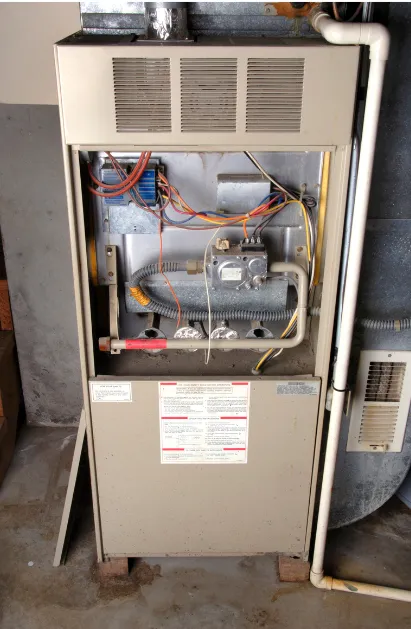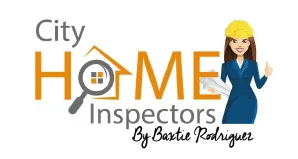
Furnace Failures We Catch Before the First Freeze
Here’s a polished November blog/newsletter draft with a fresh angle and on-the-ground inspection insights:
🥶 Furnace Failures We Catch Before the First Freeze
Real inspection findings that prevent no-heat emergencies in Chicago
When the first arctic blast hits Chicago, HVAC calendars fill up fast. The smartest (and cheapest) move is to catch small furnace problems in November—before they become no-heat emergencies. Here are the failures City Home Inspectors commonly identifies during pre-winter checks, and why they matter.
🔥 High-Impact Issues We Find All the Time
1) Cracked Heat Exchangers (CO danger)
Why it’s serious: A crack can allow combustion gases—including carbon monoxide—to mix with household air.
What tips us off: Abnormal flame behavior, rust lines, soot, failed combustion analysis, or elevated CO in the supply plenum.
Outcome: We recommend shut-down and evaluation by a licensed HVAC contractor. Replacement is often the safest route for older units.
2) Dirty or Misaligned Burners (wasted fuel, sooting)
Why it’s serious: Incomplete combustion, poor efficiency, and soot accumulation that can foul the heat exchanger.
What we see: Yellow/orange flames, delayed ignition “whoomph,” sooty burner compartment or flue.
Outcome: Professional cleaning/adjustment restores safe operation and efficiency.
3) Carbon Monoxide Leaks (detectors tell the story)
Why it’s serious: CO is odorless and potentially lethal.
What flags it: Detector alarms, combustion tests showing excess CO, backdrafting at the water heater or furnace.
Outcome: Immediate ventilation, appliance shut-down, and corrective work (venting, draft, or unit repairs).
4) Failed Draft & Venting (backdraft = CO indoors)
Why it’s serious: Poor draft can push flue gases into living spaces.
What we check: Draft at the hood, vent pitch/slope, corrosion, disconnected joints, mixed-fuel appliance conflicts.
Outcome: Correct venting or upgrade to properly sized, code-compliant materials.
5) Heat Rise & Airflow Problems (comfort + safety)
Why it’s serious: Restricted airflow overheats the heat exchanger and shortens equipment life.
What we find: Clogged filters, collapsed returns, closed registers, undersized ducts.
Outcome: Filter changes, duct fixes, and balancing to protect the exchanger.
6) Ignition & Safety Control Faults (random shutdowns)
Why it’s serious: Intermittent heat, nuisance lockouts, or unsafe operation.
What we see: Dirty flame sensors, weak hot-surface igniters, sticking pressure switches, tripped roll-out or limit switches.
Outcome: Replace/clean the faulty components and verify safe cycling.
7) Condensate & High-Efficiency Issues (hidden leaks)
Why it’s serious: On 90%+ furnaces, blocked condensate traps or frozen lines can shut down the system or cause water damage.
What we see: Algae/slime in traps, improper slope, leaking condensate at the furnace.
Outcome: Clear traps, insulate lines, add heat cable where needed.
🧪 What Our Pre-Winter Furnace Check Includes
Combustion analysis (O₂/CO/stack temperature)
Visual inspection of burners, exchanger surfaces (where visible), and roll-out/limit controls
Draft & venting performance, including shared flue dynamics
Heat rise measurement vs. nameplate spec
Airflow basics: filter condition, return/supply restrictions, blower performance
Safety devices: CO/smoke detector placement and test
Condensate management on high-efficiency units
Documentation you can share with buyers, sellers, or your service contractor
🧭 Repair vs. Replace: How We Frame It
Repair now when the furnace is safe, parts are common, and efficiency is still reasonable after cleaning/tuning.
Replace soon when:
Heat exchanger is cracked/suspect
Repeated safety trips persist after proper service
Unit is very old, inefficient, or uses obsolete parts
Venting is fundamentally wrong for the appliance type
🏠 Chicago-Specific Tips (Two-Flats & Bungalows)
Attic/Porch Return Ducts: Air leaks pull in icy air and spike heat rise—seal and insulate.
Basement Combustion Air: Tight basements starve furnaces—verify make-up air.
Shared Flues: Older water heaters + furnaces on one flue need careful draft checks.
CO Detectors: Place outside sleeping areas and on furnace level; test monthly.
✅ November Homeowner Checklist
☐ Replace/upgrade furnace filter (check size & MERV)
☐ Test CO and smoke alarms; add units where missing
☐ Clear 3 feet around the furnace; no storage on or near it
☐ Open supply/return registers; don’t “choke” rooms closed
☐ Verify condensate lines are draining (HE furnaces)
☐ Schedule a professional pre-winter system check
The Bottom Line
The first freeze is not the time to discover a cracked exchanger, a drafting problem, or a CO leak. A November furnace check catches the issues we see every winter—before you’re left without heat (or waiting in a long service line).
👉 Beat the rush. Book your pre-winter furnace check with City Home Inspectors: www.cityhomeinspectors.com
OFFICE ADDRESS
Illinois
City Home Inspectors, LLC
1010 Lake St. #200
Oak Park, IL 60301
Florida
1010 Lake St. #200
Sarasota, Fl 34236
